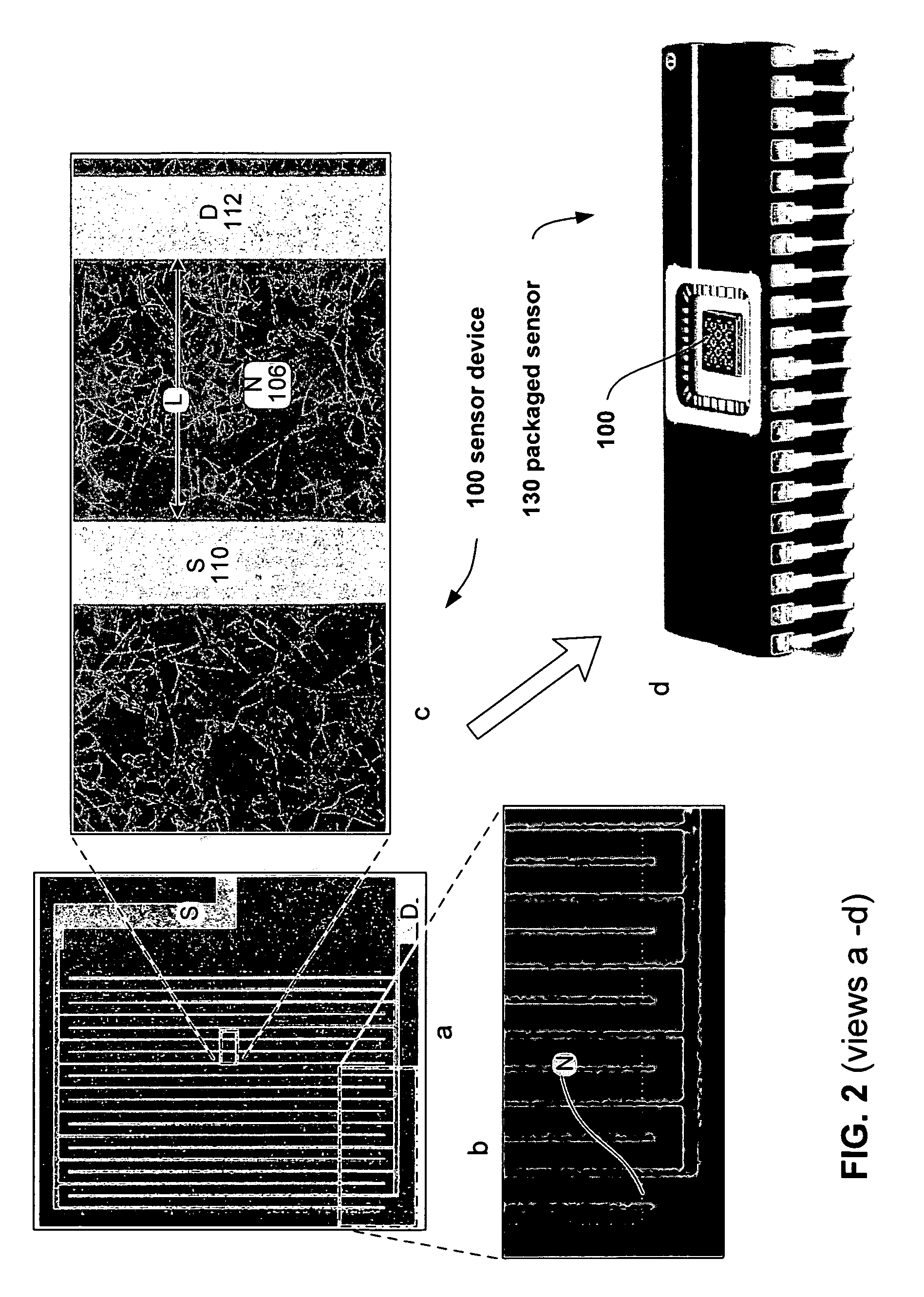Sensor having a thin-film inhibition layer
a sensor and inhibition layer technology, applied in the direction of instruments, physical/chemical process catalysts, gas-gas reaction processes, etc., can solve the problems of high cost, weight and complexity, and the conventional no detection strategy suffers limitations in equipment size, weight, cost and/or operational complexity, and achieves rapid and reversible, high sensitivity, and large dynamic range
- Summary
- Abstract
- Description
- Claims
- Application Information
AI Technical Summary
Benefits of technology
Problems solved by technology
Method used
Image
Examples
Embodiment Construction
1. Nanosensor Architecture.
[0071]FIG. 1. shows an exemplary electronic sensing device 100 having aspects of the invention, for detecting an analyte 101, such as biomolecule, organic and inorganic species, including environmentally and medically relevant volatiles and gases, such as NO, NO2, CO2, NH3, H2, H2O2, CO and the like. Sensing device 100 comprises a nanostructure sensor 102. Sensor 102 comprises a substrate 104, and a conducting channel or layer 106 comprising a nanostructure material, such as a nanotube or network of nanotubes, disposed on the substrate. The nanostructure material 106 may contact the substrate as shown, or in the alternative, may be spaced a distance away from the substrate, with or without a layer of intervening material.
[0072]In an embodiment of the invention, conducting channel 106 may comprise one or more carbon nanotubes. For example, conducting channel 106 may comprise a plurality of nanotubes forming a mesh, film or network. Certain exemplary embodim...
PUM
| Property | Measurement | Unit |
|---|---|---|
| thickness | aaaaa | aaaaa |
| thickness | aaaaa | aaaaa |
| thickness | aaaaa | aaaaa |
Abstract
Description
Claims
Application Information
 Login to View More
Login to View More - R&D
- Intellectual Property
- Life Sciences
- Materials
- Tech Scout
- Unparalleled Data Quality
- Higher Quality Content
- 60% Fewer Hallucinations
Browse by: Latest US Patents, China's latest patents, Technical Efficacy Thesaurus, Application Domain, Technology Topic, Popular Technical Reports.
© 2025 PatSnap. All rights reserved.Legal|Privacy policy|Modern Slavery Act Transparency Statement|Sitemap|About US| Contact US: help@patsnap.com



